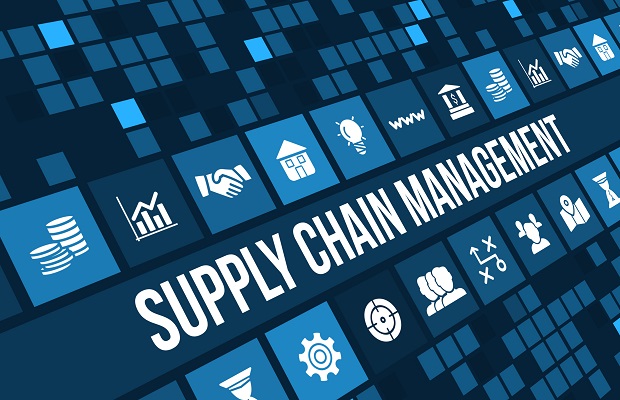Supply chain management is a critical component of business success. In fact, supply chain management can be defined as the process of planning and overseeing the flow of goods and services from raw materials to finished products in a company. Companies that have mastered this process are able to manage a complex set of activities while maintaining low costs and high-quality standards. However, it’s important to remember that there are no shortcuts when it comes to optimizing your supply chain management strategy.
 Hence, here are nine practices to optimize your supply chain management:
Hence, here are nine practices to optimize your supply chain management:
 1. Increase Transparency Throughout The Supply Chain
1. Increase Transparency Throughout The Supply Chain
Transparency is a vital component in supply chain management. It’s important for risk mitigation and collaboration, but it also enables efficiency and supplier handling. Not only does transparency allow you to track all of your information, but it also lets your suppliers know that they can trust you with their data as well.
When looking at transparency in your supply chain management, there are a few questions that you must ask yourself: Who needs access? How will this benefit my company? Will it help me save money or make more profit? If you answer these questions and come up with positive answers, then the next step should be implementing a system that allows all members of your supply chain to share data seamlessly through cloud-based solutions.
2. Improve The Efficiency Of The Transportation Process
The most important thing to keep in mind when trying to improve the efficiency of your transportation processes is that every truckload counts. If you’re moving goods from one place to another, whether it’s across town or across the country, every second counts. You want to make sure that every step in your process is as efficient as possible so that you can move more products faster and with fewer resources. To do this, consider these four best practices:
- Reduce the time it takes for goods to move from one location to another through improved coordination between stages of production and distribution;
- Reduce the cost of transporting goods by using less fuel per mile traveled (one way);
- Reduce how many people are needed for a particular task by using technology such as automated guided vehicles (AGVs), self-driving trucks, automated storage/retrieval systems (ASRS), etc.;
- Optimize the efficiency of your warehousing services by minimizing wasted space within these facilities.
3. Define And Measure A Set Of Key Performance Indicators (KPIs)
To define and measure a set of key performance indicators (KPIs), you need to set goals for each KPI, then use data to measure your progress towards those goals.
The next step would be to put the KPIs in a dashboard. A good supply chain management dashboard will let you monitor the success of your key initiatives, and it should be easy to see what’s going on at a glance. If something goes wrong, you won’t have time to pore through spreadsheets or dig up reports—you need real-time information in order to make quick decisions and get things back on track as quickly as possible.
Make sure that your KPIs aren’t too many or too few; if there are too few, it can be difficult for employees across departments like sales and marketing to know what they need to focus on; but if there are too many, then it becomes overwhelming for team members who may become disengaged from their work because they feel overwhelmed by so many metrics that don’t pertain directly to them.
4. Improve Supplier Performance
The third practice is to improve supplier performance. A good way to do this is by training suppliers on your specific business processes and standards. Another approach is incentivizing suppliers through rewards or penalties, such as bonus payments when they meet certain goals or losing contracts if they don’t perform well. The use of monitoring systems can also help you identify problem areas in the supply chain and make adjustments accordingly.
Another option is collaborating with suppliers so that they’re more invested in your organization’s success and have a vested interest in maintaining a successful relationship with you.
5. Embrace Emerging Technologies
The way companies conduct business is evolving, so their supply chain management should follow suit. The new technologies available can improve efficiency, visibility, cost reduction, and customer satisfaction—not to mention maintaining competition in a highly competitive marketplace.
If your company has not yet embraced emerging technologies such as IoT (the Internet of Things), machine learning/AI (artificial intelligence), blockchain technology, and cloud computing—you’re falling behind your competitors who have already started using these tools to enhance their supply chain management processes.
6. Have A Strong Risk Mitigation Strategy In Place
A strong risk mitigation strategy is one of the most important keys to supply chain success. To mitigate risks in your supply chain, consider:
- Developing a clear strategy on how to react when things go wrong. You need to have a contingency plan for when a supplier has an issue with delivery times or quality control procedures.
- Incorporating flexibility into your planning process—you don’t want to be stuck if unforeseen circumstances arise, which can happen easily when you’re dealing with complicated logistics systems and human beings! Make sure that any contracts or agreements you make allow room for change without being penalized by your partners (or yourself).
7. Implement Lean And Collaborative Supply Chain Strategies
Implementing lean, agile, and collaborative supply chain strategies will increase process efficiency, improve customer service and reduce costs in the long run. This will also help you increase productivity, improve quality, and increase flexibility and visibility across the entire supply chain network.
Use buyer-driven RFQs (request for quotations) or RFPs (request for proposals) to solicit bids from suppliers that meet specific criteria. Consider their price range or production capabilities before making a purchase decision so that there is no overstock on hand at any given time.
8. Establish Processes For Identifying And Addressing Problems As They Arise
One of the best ways to optimize your supply chain management is to identify and address problems as they occur. This can be done through a variety of methods, including:
- Using analytics to identify problem trends
- Implementing a problem management system that facilitates communication between various stakeholders in the organization
- Establishing a process for identifying problems and creating solutions
9. Partner With A Third-Party Logistics Provider
The logistics industry is moving toward more integrated, collaborative, and strategic partnerships. Third-party logistics providers are experts in supply chain management, which can help you optimize your supply chain. They can also assist you with risk management, efficiency improvement, and transparency to enhance supplier performance.
Outsourcing supply chain management to a third-party logistics provider can be a win-win for both partners. The logistics provider benefits from increased business volume and gets access to new customers; the client benefits from reduced overall costs and gains greater flexibility in managing its supply chain.
Conclusion
Supply Chain management is a crucial part of business operations, whether you’re just starting out or an established company looking to optimize its supply chain. By following these nine best practices and applying them to your own business, you can ensure that your supply chain is running smoothly at all times—and hopefully even save money in the process!




Comments are closed.